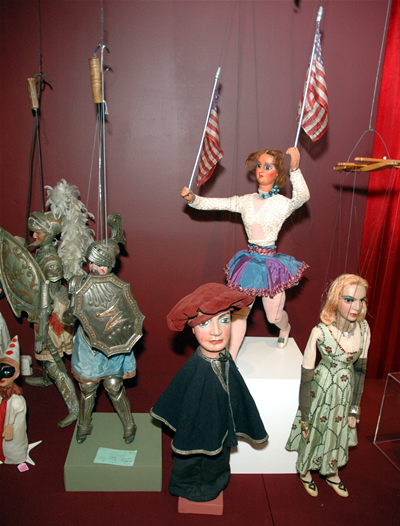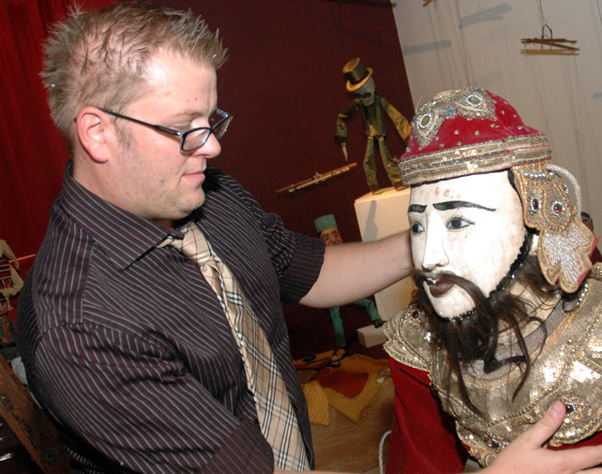Seeing Strings
Scores of puppets on display in Anthropology Teaching Museum
September 10, 2007
By Mimi Ko Cruz
Some have no strings and even resemble famous characters from history and film. Others can dance, march, open and shut their eyes and mouths and move like real people or animals. Then, there are the ones in shadow and the ones waiting for a hand to bring them to life.
They are part of a puppet exhibit, “A World of Puppets: Expressions of Culture,” that opens Saturday, Sept. 15, in the Anthropology Teaching Museum in Room 426 of McCarthy Hall.
As the exhibit opening nears, the curator, anthropology graduate student Justin E. Stewart, is pulling a few hundred strings into position, making sure all the marionettes, hand puppets, finger puppets and shadow puppets share the spotlight. About 80 puppets are featured.
“We had the good fortune to select from the largest collection of puppets in the United States,” said Joseph J. Nevadomsky, professor of anthropology and Stewart’s adviser. “The puppets are from all around the world, from Africa to India and America, and we have posters in different languages, advertising the puppets.”

Nearly all the puppets on display are from the Allan Cook collection from the Conservatory of Puppetry Arts (COPA) in Pasadena. Cook’s collection includes porcelain marionettes from China, handmade wood puppets from Mali and other parts of the world, a deer-dancing rod puppet from Mexico, a Greek shadow puppet and various stage and television stars made by puppeteers throughout the country. Cook has more than 3,000 in his collection, which he has been amassing over the past seven decades.
“Puppets are as unique as the individuals who created them, yet they all share one thing: they are found in almost every part of the world,” Stewart said. “Puppets are miniature representations of specific cultures and have been used to entertain while educating on topics such as local values, traditions and history. It is my hope that through a medium such as puppets, an art form known to almost everyone, visitors to this exhibit can take away an appreciation of what makes each of us unique and an understanding that through puppets, we all share an interest in entertainment and we all value the importance of passing on our values, traditions and history.”
Throughout the semester, the museum will host guided tours of the exhibit, which runs through Dec. 15. The general public is welcome to visit weekdays from 8 a.m. to 5 p.m. For more information, call 278-3626.
For a printable PDF of the October Inside story: http://campusapps.fullerton.edu/news/inside/2007/Story_pdfs/Oct_SeeingStrings.pdf
 Curator
Justin E. Stewart sets up the display.
Curator
Justin E. Stewart sets up the display.


